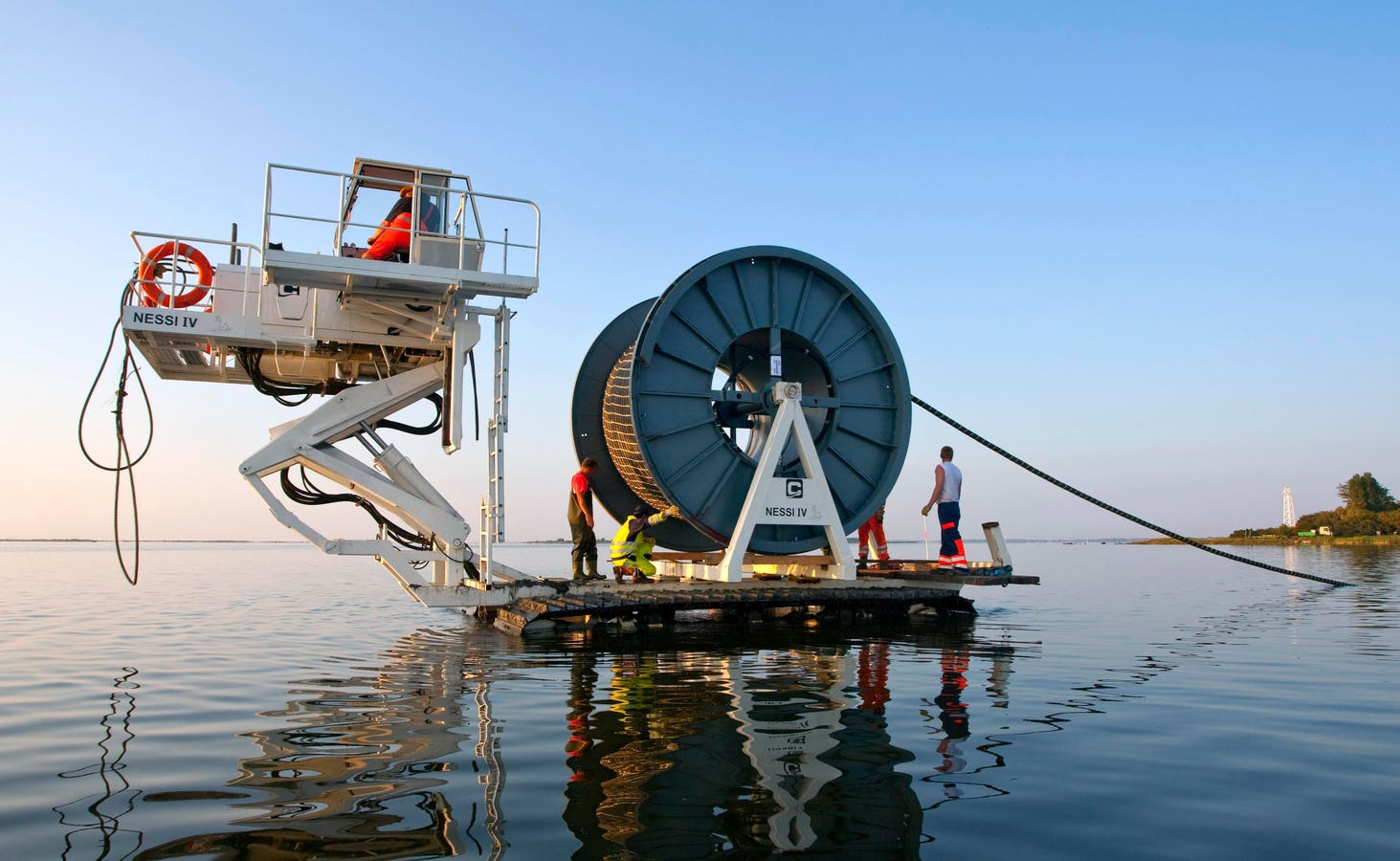On Monday, three fiber optic cables were damaged in the Red Sea, causing a reduction in internet bandwidth in the region that could take weeks or months to repair, due to ongoing conflict in Yemen. The three cables carried about 25% of the internet traffic in the region, forcing operators to turn to other cables and to satellites to route around the damage. The cause of the cable cuts was likely the anchor of the cargo vessel Rubymar, according to a CBS interview with White House national security communications advisor John Kirby, which was struck by missiles and abandoned by its crew in mid-February.
Cutting these cables wasn’t deliberate, but the incident highlights the particular vulnerability of undersea cables, which carry about 97% of the planet’s internet traffic, to intentional disruption. “It’s concerningly easy,” Michael Darrah, a military fellow at the Center for Strategic and International Studies, told Forbes. “In fact it’s so easy that in many cases it’s hard to determine if it’s an accident or intentional.”
This fact, Darrah added, becomes more important as the world moves away from large military actions, with geopolitical rivals more likely to target each other in more subtle ways. There have been cable-damaging incidents, he said, “that are suspected of being deliberate, but one of the reasons why it’s such a challenging problem space is that they’re vulnerable to accidents as well,” he said. “That plays right into the hands of any adversary who wants to operate in the gray zone and not take responsibility for any attacks.”
These smaller types of attacks, however, don’t necessarily pose a major disruption, said Tim Stonge, VP of research at analyst firm TeleGeography. There are about 100 incidents a year impacting undersea cables, he said, so “the industry is accustomed to failure.” About two-thirds of these incidents are caused by human activity: either cables getting caught by fishing nets or pulled up by anchors. The length of time to repair the damage depends on the location of the break and the jurisdiction it’s in, but usually takes at least a few days.
Nearly all of the subsea cables are owned by private industry. Many of the older cables were built by consortiums of telecommunications providers, or by companies who built cables for the purpose of selling capacity to providers. More recently, Silicon Valley has gotten into the game, too. TeleGeography estimates that Meta, Google, Microsoft and Amazon alone own or lease nearly half of the available undersea bandwidth.
Stonge adds that the industry mostly prepares for breaks by adding redundancy. The three cables cut in the Red Sea for example, still left 11 undersea cables in the region capable of carrying internet traffic. TeleGeography estimates there are about 574 active or planned undersea cables currently. This makes it unlikely for a country to be completely cut off from the internet, unless it’s an island nation, as happened in Tonga in 2022 when its single undersea cable was destroyed by an underwater volcanic eruption. That damage took about a month to repair.
Still, given the reliance of the global economy on internet access, governments have begun taking more steps to secure undersea cables. Last year, NATO launched a coordination center geared towards protecting undersea infrastructure by bringing together industry and government stakeholders to provide more cohesive security for cables and pipelines, as well as a joint task force with the EU.
The major issue that needs to be addressed for protection in the short term, Darrah said, is to make it easier to identify the specific vessels that might cause damage to cables. Right now, telecom companies know when and where a break happens, but they don’t necessarily know the specific cause — even if it’s clear that an anchor caused a break, that doesn’t mean it’s known what ship the anchor came from. This can lead to incidents like damage to two undersea cables that cut off the internet to the Matsu islands off the coast of Taiwan in February 2023. Taiwan’s National Communications Commission reportedly blamed Chinese ships for the breaks, which took over a month to repair, but was unable to provide evidence.
That veil of uncertainty can be lifted, he continued, if governments started increasing surveillance of infrastructure, utilizing sensor information like radar, satellite images, ship transponders and other data to make it possible to directly identify who or what damaged an undersea cable. Stonge adds that it’s potentially possible for industry to also take surface pressure readings of their cables, which can let them know when there’s a ship above them.
“The primary attractiveness of undersea infrastructure to an intentional attack is the built-in anonymity that comes with it,” Darrah said. “If you remove that anonymity, it becomes a much less attractive target set.”
Read the full article here





